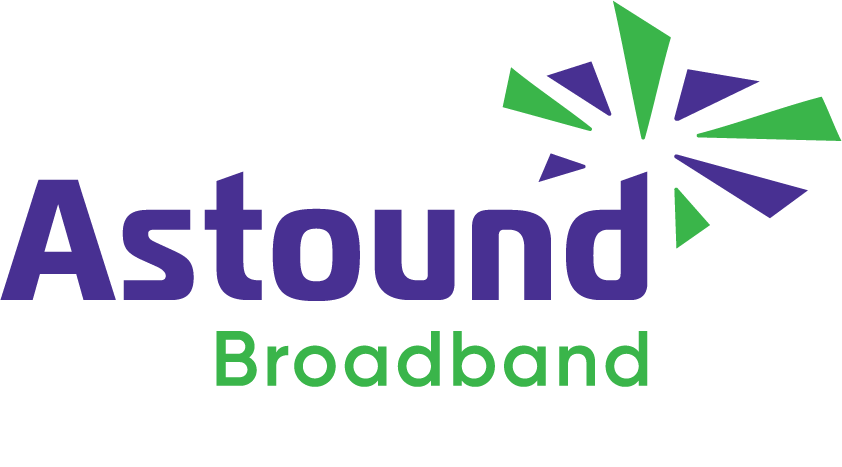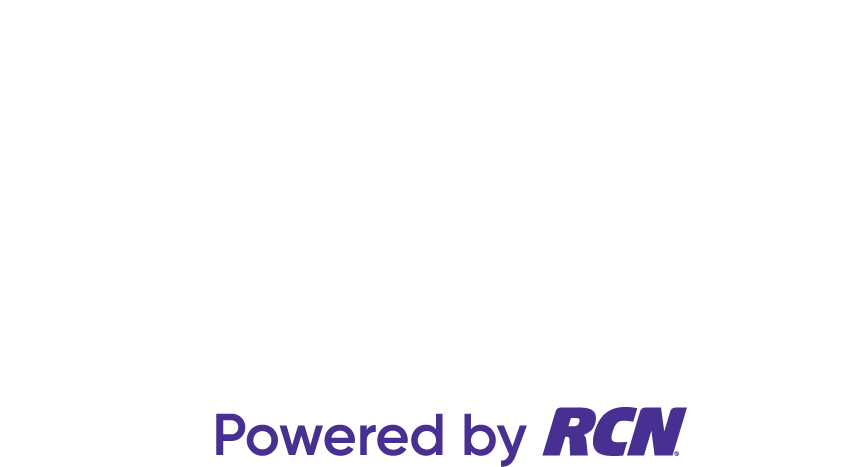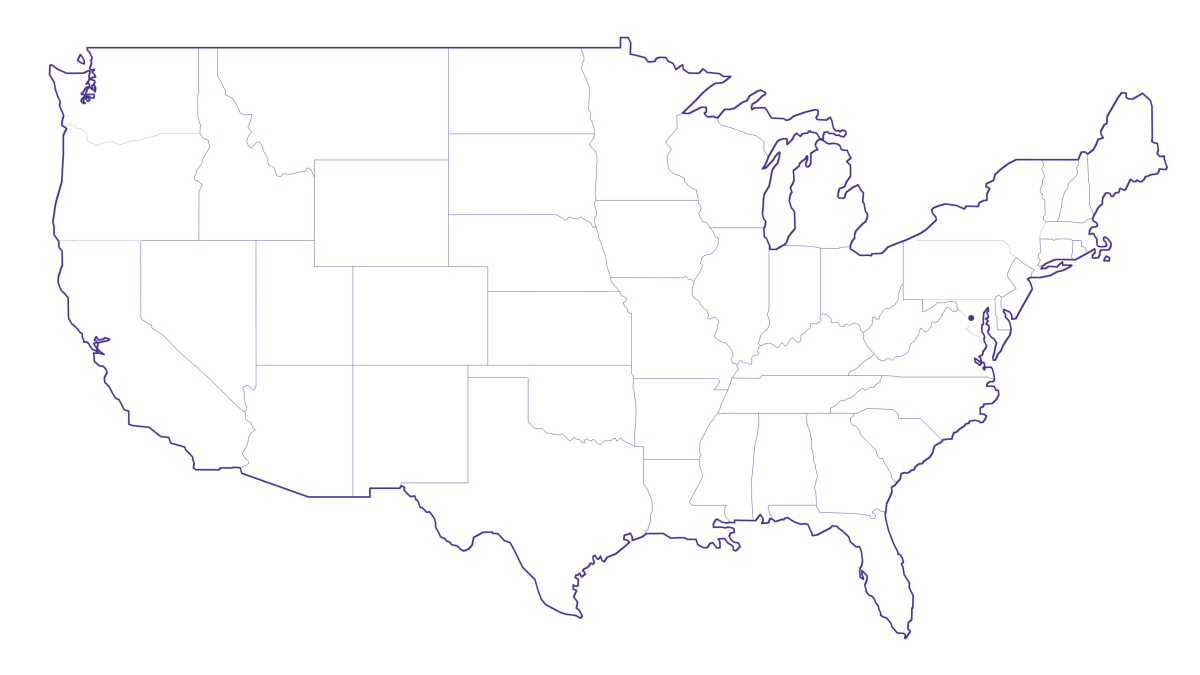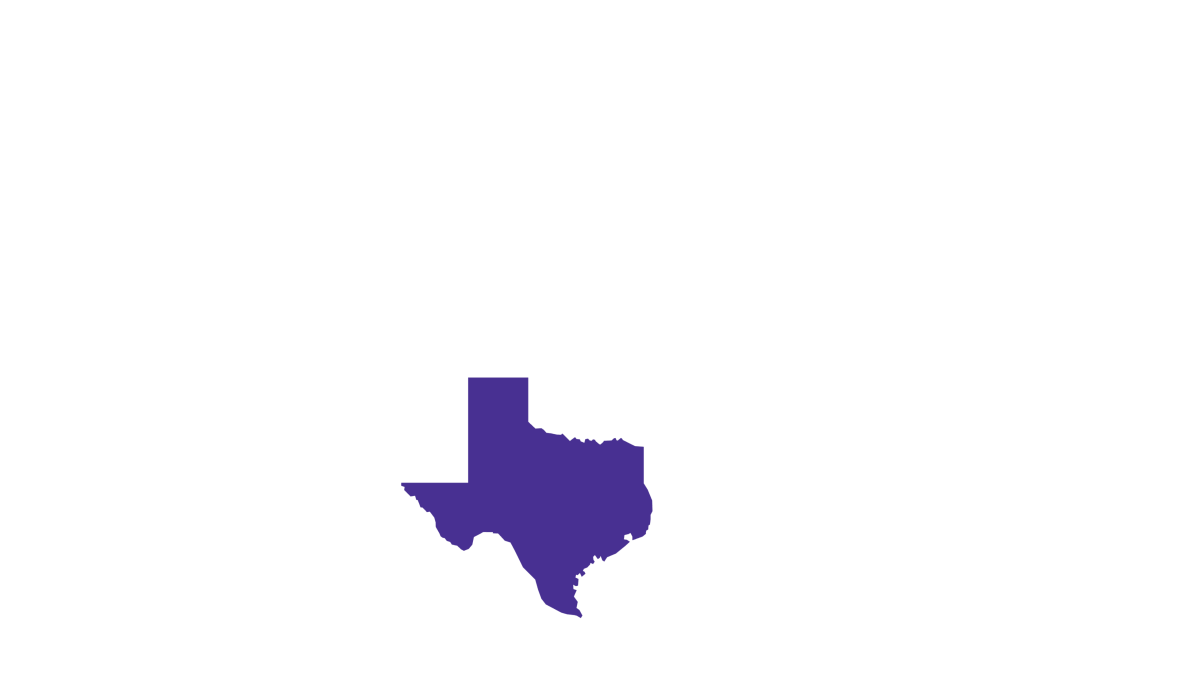What internet speed do I need for streaming?

If you’re wondering what internet speed is good for streaming, each household member needs at least 25 Mbps download speed and 5 Mbps upload for smooth HD playback and casual live streaming across multiple devices. According to Ookla’s June 2025 Speedtest Global Index Report, the average fixed broadband speed in the U.S. is 287.59 Mbps download and 51.83 Mbps upload, which is more than enough for HD, 4K/8K streaming.
For the most reliable internet access, use a wired cable or fiber broadband connection with a quality wireless router, or connect devices directly via Ethernet to reduce latency, lag and buffering.
This article will review the different speeds available and help you determine the best speed for your streaming needs.
What you'll learn:
See how much you can save
Save with Astound
Check out our savings calculator to see the change in your bill when you build a plan with Astound.
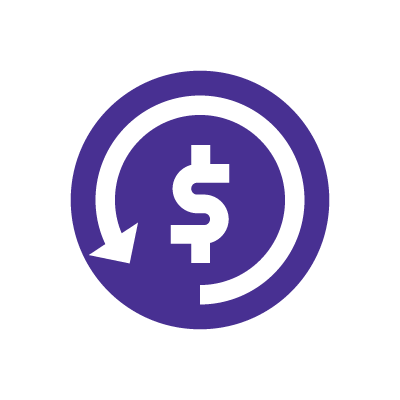
What is the best internet for streaming?
Different Internet Service Providers (ISPs) provide various types of internet connections. Each has a direct impact on your speeds, bandwidth, latency and overall streaming experience. The best option depends on your household’s streaming habits, number of devices and demand for other online activities.
Let’s explore the different internet connections available and determine which is best for streaming.
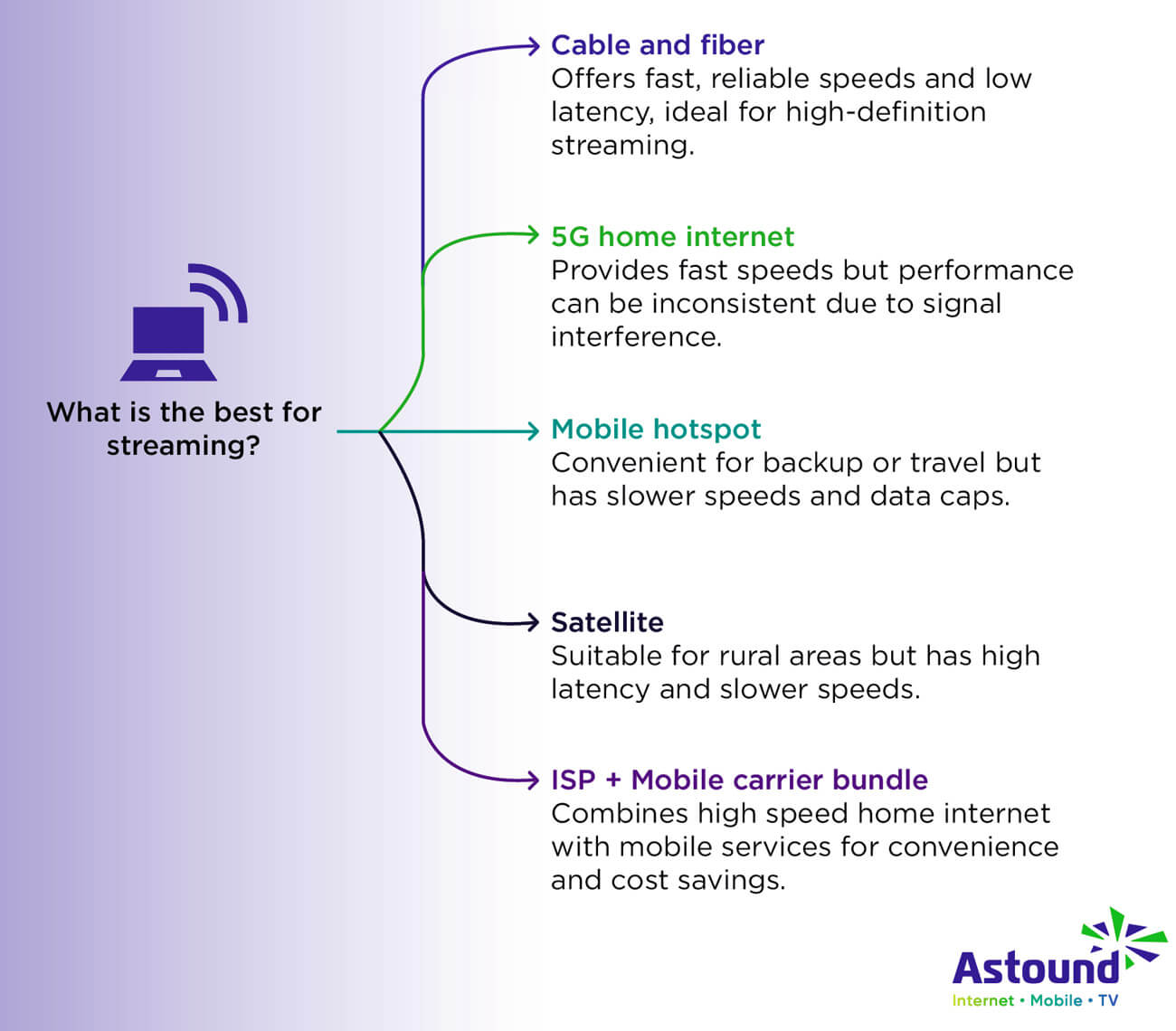
1. Cable and fiber-powered
Cable and fiber are wired broadband connections offering fast, reliable and consistent speeds. Cable internet uses cable infrastructure to transmit internet traffic, while fiber uses fiber optic cables that transmit data as light pulses.
Fiber delivers the fastest internet speeds of any internet type, delivering high download and upload speeds up to 5 Gigabit+.
Fiber optic technology ensures data is transmitted with lower latency (ping) and less data disruption, as light signals are less vulnerable to network interference. Fiber’s low latency and fast download and upload speeds make it the best choice for streaming HD, 4K, 8K and even live streaming in virtual reality.
Cable internet offers speeds from 100 Mbps to 1 Gbps. When paired with a modern DOCSIS 3.1 modem, which supports higher bandwidth and speeds up to 10 Gbps download and 1 Gbps upload, it can deliver excellent streaming performance for most households.
Furthermore, cable and fiber are generally accessible, as wired internet infrastructure is present in most suburban and metropolitan areas.
2. 5G home internet
5G home internet is a fixed wireless broadband technology that uses cell towers to transmit high-frequency signals called millimeter waves (mmWaves) to a wireless router in your home. It offers fast internet speeds and lower latency than previous 4G and 4G LTE networks, making it capable of supporting HD and 4K streaming.
However, its performance can be inconsistent and unreliable due to network congestion, physical obstructions, or weather conditions, as the wireless signals are prone to interference. The interference causes latency, which delays data transmission and leads to buffering and interruptions that disrupt the streaming experience.
Other factors that affect 5G home internet speeds include:
- Increased distance between streaming devices and 5G cell towers
- Data caps imposed on 5G home internet
- Limited device compatibility
In addition, 5G’s coverage is limited to cities and urban areas, as it is a newer technology. If you choose 5G home internet for streaming, ensure you have a strong signal and a generous data cap to maintain a stable connection during peak usage hours.
3. Mobile hotspot
A mobile hotspot is a feature on most smartphones that allows other devices to connect to the internet over a wireless network using cellular data. It is a backup option when your WiFi is down, when you’re travelling, or when you move to a new location.
Like 5G home internet, mobile hotspots transmit data wirelessly and are prone to latency, network congestion and signal interference, which can impact streaming quality during live streaming or video on demand playback.
Other disadvantages of mobile hotspots include the following:
-
- Slower speeds than traditional wired connections
- Less reliability, as mobile signal strength depends on your location
- Battery drain on your phone, especially when multiple devices are connected
- Limitations on the number of simultaneously connected devices
- Data caps imposed on mobile data plans
You can also use portable hotspot devices as a hotspot rather than your mobile phone. These devices offer dedicated hardware for broadband reception, have an extended battery life and can accommodate multiple devices simultaneously.
While mobile hotspots are a convenient choice for streaming, keep in mind their data allowances, slow speeds and impact on your device’s battery life. Choose a plan with enough monthly data for streaming and keep track of your data usage to avoid exceeding data limits and receiving overcharges or throttling.
4. Satellite
Satellite internet is an alternative option for streaming if you live in rural areas or are camping in an RV where other hardwired connections are unavailable.
While satellite internet speeds are improving, they still can’t match the reliability, speeds or low latency of wired connections. The longer data travel distances of satellites can cause higher ping times, which can affect bitrate, frame rate and real-time applications like web conferencing or virtual reality.
If you choose satellite internet, keep a few caveats in mind. Its limitations include:
- Higher latency than other internet connections
- Slower speeds than cable and fiber connections
- Low data caps on satellite internet plans
- Frequent interruptions due to adverse weather conditions
While satellite internet is a good alternative for streaming in remote or rural places, you should manage your expectations regarding consistency and speed.
5. ISP + mobile carrier
You can get the best of both worlds by bundling internet and mobile services into one plan. This plan gives you the flexibility of high speed internet for streaming and reliable mobile network coverage when you’re on the go, plus the convenience of a single bill and the benefit of cost savings.
For example, bundling Astound’s fiber-powered internet and cell phone plans gives you the reliable internet speeds and nationwide 5G coverage at an affordable price for streaming, remote work, online learning and web surfing from anywhere.
These bundles help you save money, simplify billing and allow you to build a plan to match your household’s streaming habits. With Astound, you can also add TV services to your bundled plan, giving you one place to enjoy your favorite shows, live sports and news
FIBER-POWERED GIG INTERNET
Gig+ speeds, unbeatable value
Get Gig speeds up to 1500* Mbps starting at $70/mo on Astound’s ultra-reliable fiber-powered‡ network.

What is a good internet speed for streaming?
Sufficient download and upload speeds and enough bandwidth to handle multiple devices are critical for a smooth experience while streaming content or uploading videos to platforms like YouTube or Twitch. While both speeds are essential for streaming, they serve different purposes. Let’s explore why they matter to streaming.
Download speed
Download speed is the rate at which data transfers from the internet to your device, measured in Megabits per second (Mbps). For many online activities, a good download speed is the most essential factor.
When streaming, download speeds determine how quickly video files load and what video quality they play in. Higher download speeds minimize buffering, provide consistent playback and enable adaptive bitrate streaming, which adjusts to your connection in real time. For instance, streaming on YouTube requires:
- 5 to 10 Mbps for 1080p streaming
- 15 to 25 Mbps for 4K resolution streaming
Virtual reality or 8K content requires faster speeds and lower latency, as they are more bandwidth-intensive, especially when running on multiple devices simultaneously.
Upload speed
Upload speed is the rate at which data is transmitted from your device to the internet. Similarly, it is measured in Megabits per second.
A good upload speed is essential for live streaming, web conferencing and media uploads. Live streaming in 1080p may require around 10 to 15 Mbps, while 4K streaming may need more than 25 Mbps. These bandwidth-heavy activities require fast upload speeds to ensure high video quality and maintain an uninterrupted viewing experience.
Sometimes, your ISP’s advertised upload bandwidth and the actual upload speeds you experience can vary due to network congestion, throttling speeds or equipment issues. You should run speed tests frequently to confirm whether your current upload speeds are sufficient for your streaming setup.
Data
Data refers to the total amount of information transmitted over an internet connection in a particular period. It is measured in Megabytes (MB), Gigabytes (GB) or Terabytes (TB).
Streaming is data-intensive, especially when watching or live-streaming videos in 4K resolution, VR or in high frame rate formats.
Be mindful of your data usage, especially when streaming using 5G home internet, satellite internet or a mobile hotspot plan, as they usually have a data cap. Exceeding the threshold can throttle your internet speed and lead to overage charges on your plan. To stay within your allowance:
- Track your data usage in your phone’s settings, the carrier’s app or their web portal.
- Use a lower streaming quality like SD.
- Consider an unlimited data plan for HD or 4K content.
For the best performance, especially if you are a professional live streamer or prefer HD and 4K content, a wired connection is the best option for you. It delivers fast internet speeds with unlimited or higher data allowances that facilitate a smooth streaming experience.
Minimum internet speeds for streaming activities
The table below details the minimum download and upload speeds for various streaming activities. Actual requirements may vary based on the platform, content quality and number of connected devices.
| Streaming activity |
Download speed |
Upload speed |
|---|---|---|
| SD video (480p) | 3–4 Mbps | 1 Mbps |
| HD video (1080p) | 5–10 Mbps | 1–5 Mbps |
| 4K video | 15–25 Mbps | 5–10 Mbps |
| VR or 8K video | 50+ Mbps | 20–25 Mbps |
| Live streaming (1080p) | 10–15 Mbps | 5–10 Mbps |
| Live streaming (4K) | 25+ Mbps | 25+ Mbps |
| Music streaming | 1–5 Mbps | 0.5 Mbps |
|
Streaming activity
SD video (480p) |
Download speed
3–4 Mbps |
Upload speed
1 Mbps |
|
Streaming activity
HD video (1080p) |
Download speed
5–10 Mbps |
Upload speed
1–5 Mbps |
|
Streaming activity
4K video |
Download speed
15–25 Mbps |
Upload speed
5–10 Mbps |
|
Streaming activity
VR or 8K video |
Download speed
50+ Mbps |
Upload speed
20–25 Mbps |
|
Streaming activity
Live streaming (1080p) |
Download speed
10–15 Mbps |
Upload speed
5–10 Mbps |
|
Streaming activity
Live streaming (4K) |
Download speed
25+ Mbps |
Upload speed
25+ Mbps |
|
Streaming activity
Music streaming |
Download speed
1–5 Mbps |
Upload speed
0.5 Mbps |
Find your speed
What speed do you need?
Maybe you just need the essentials—or maybe you need to unleash the ultimate internet speed. Explore your options to get the best experience for every device in your home.

How many Mbps do I need for streaming?
The internet speeds required for streaming depend on the media quality of the content you stream, the platform you are streaming from and the number of users connected to the internet connection.
Let’s look at the different internet speed ranges available and determine which one can handle your streaming requirements.
1500 Mbps - 1000 Mbps
Internet speeds that fall under this range are known as Gigabit speeds. Gigabit speeds deliver high download and upload speeds and bandwidth capacity for data-intensive tasks, making it easy to support households with multiple internet users simultaneously.
In a household with six people using the internet simultaneously, a Gigabit speed connection can facilitate tasks such as:
- Users A and B are streaming 4K videos on separate devices: 50 Mbps per hour
- User C is streaming 4K online gameplay content: 125 Mbps per hour
- User D is hosting a livestream video conference with a large audience: 100 Mbps per hour
- Five devices streaming music at 25 Mbps each: 125 Mbps
Other internet activities might be taking place in the background, such as:
-
- User E is working from home: 100 Mbps per hour
- User F is on VR gaming with an Oculus Quest 2: 400 Mbps per hour
- Smart devices accessing the internet: 100 Mbps
In this scenario, the total internet speed needed to handle these tasks is 1 Gbps. However, consider higher download speeds like 1.2 Gbps or 1.5 Gbps to adequately accommodate unexpected guests, increased streaming demands or other additional online activities.
A broadband connection like fiber internet will provide fast, reliable and consistent Gigabit internet speeds with a large bandwidth capacity and low latency to facilitate these tasks.

600 Mbps - 300 Mbps
Speeds of 300 Mbps to 600 Mbps are enough to handle moderately intensive online tasks for a household of three to five users. For instance, in a family of five users, this range can support tasks like:
- Users A and B are streaming 4K videos on separate devices at 50 Mbps per hour
- User C is streaming 4K online gameplay content at 125 Mbps per hour
- User D is hosting a live-stream video conference with a large audience at 100 Mbps per hour
Other online activities might be running in the background, such as:
- User E is working from home using 100 Mbps per hour
- Smart home devices accessing the internet at 100 Mbps per hour
Running such tasks simultaneously requires 475 Mbps to be handled sufficiently. If you are concerned about unexpected users and increased devices or tasks connecting to your WiFi, check out the Gigabit speed tiers to accommodate them.
100 Mbps
A 100 Mbps internet speed connection is enough to handle streaming needs for one or two users in a household.
Some of the activities you can achieve with 100 Mbps include:
- Streaming HD and 4K content on various devices
- Live-streaming content to audiences on YouTube or Twitch
- Video conferencing when working at home
Check out higher speed tiers if you are a professional live streamer to provide a better streaming experience to your audiences. Higher speed plans will offer more bandwidth to support uploads, background tasks and other online activities running simultaneously without affecting video quality.
Switching is easy
No contracts. No nonsense.
We make switching your internet services easy with on-time appointments and self‑install options to get you connected fast.
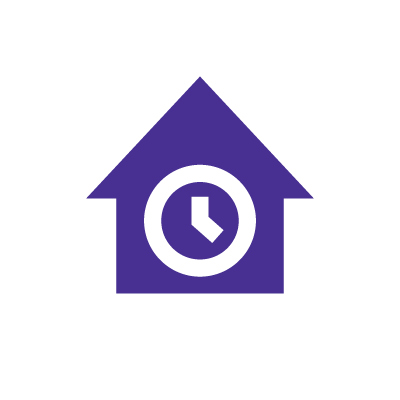
Comparison chart of internet speed tiers
The chart below compares a range of internet speed tiers, the recommended number of users for each and the activities they can handle. Use this to match your household’s usage needs with the right internet plan.
| Speed tier |
Household size |
Best for |
|---|---|---|
| 100 Mbps | 1–2 users | HD and 4K video streaming, live streaming to YouTube/Twitch, video conferencing for remote work |
| 300–600 Mbps | 3–5 users | Multiple 4K streams, live streaming, online gaming, HD video conferences, remote work, smart home device connectivity |
| 1000–1500 Mbps (Gigabit) | 5–6+ users | Multiple 4K/8K streams, 4K live streaming, VR gaming, large file uploads, cloud backups, heavy simultaneous use across many devices |
|
Speed tier
100 Mbps |
Household size
1–2 users |
Best for
HD and 4K video streaming, live streaming to YouTube/Twitch, video conferencing for remote work |
|
Speed tier
300–600 Mbps |
Household size
3–5 users |
Best for
Multiple 4K streams, live streaming, online gaming, HD video conferences, remote work, smart home device connectivity |
|
Speed tier
1000–1500 Mbps (Gigabit) |
Household size
5–6+ users |
Best for
Multiple 4K/8K streams, 4K live streaming, VR gaming, large file uploads, cloud backups, heavy simultaneous use across many devices |
Streaming in an apartment vs. a house
The best internet speeds you need depend not only on the quality of streaming you prefer but also on your home environment. Here’s how living in apartments versus houses impacts your speed requirements.
In an apartment
If you live in an apartment, keep the following considerations in mind.
- Number of users and devices: For a single person with a few devices, download speeds between 25 and 100 Mbps are sufficient for streaming HD or 4K resolution content. Apartments with two to four members engaging in remote work, online gaming or video conferencing simultaneously should consider higher speed tiers for consistent connections.
- Provider options: Most apartments are found in cities and urban areas, presenting a wider pool of ISPs and broadband types than in rural or remote areas. Consider cable or fiber internet if you are in an urban area, as they deliver faster and stable connections for streaming.
- Distance from the router: Place your wireless internet setup centrally in your apartment to help maintain even coverage. If you want faster speeds and lower latency, connect your devices directly to the router via Ethernet.
- Network congestion: In apartments with cable internet, the shared infrastructure can lead to slower average internet speeds during peak hours due to network congestion. Upgrading to a higher speed tier or to a fiber-to-the-home (FTTH) connection can help maintain fast and consistent connections for multiple users and devices.
If you are moving, here’s how you can set up your internet and WiFi in a new apartment.
In a house
Houses often have more occupants, larger floor plans and more connected devices than apartments. Keep the following factors in mind if you live in a single-family home.
-
- Number of devices and users: Large homes require high speed Gigabit internet plans because they provide enough bandwidth to support multiple users and devices connected simultaneously.
- Home size and layout: Large homes with large floor plans and multiple levels often have WiFi dead zones with poor or no internet coverage. Consider a mesh WiFi system to provide whole-home WiFi coverage in all rooms. Position the mesh routers strategically across the house to maintain a seamless roaming connection throughout.
- Provider options: If your home is in an urban or suburban area, you may have access to fiber, cable or fixed wireless internet, while if your home is rural you may rely more on satellite internet. Always review the provider options in your area before subscribing to a provider.
If you are moving to a new house, here’s how to set up your internet and WiFi.
Apartment vs. house internet recommendations: Side-by-side comparison table
The chart below compares the internet recommendations for apartments versus houses to help you choose the best internet speeds for your home.
| Factor |
Apartment recommendations |
House recommendations |
|---|---|---|
| Speeds | 25–300 Mbps | 300 Mbps–1 Gbps+ |
| Internet types | Fiber, cable or 5G home internet | Fiber, cable, 5G home internet, Satellite |
| Equipment | Single router or mesh WiFi for large apartments | Mesh WiFi for whole home coverage |
| Challenges | Network congestion | Dead zones, larger coverage area |
| Setup Tips | Place the router centrally or use Ethernet for primary devices | Place the mesh nodes strategically across the house |
|
Factor
Speeds |
Apartment recommendations
25–300 Mbps |
House recommendations
300 Mbps–1 Gbps+ |
|
Factor
Internet types |
Apartment recommendations
Fiber, cable or 5G home internet |
House recommendations
Fiber, cable, 5G home internet, Satellite |
|
Factor
Equipment |
Apartment recommendations
Single router or mesh WiFi for large apartments |
House recommendations
Mesh WiFi for whole home coverage |
|
Factor
Challenges |
Apartment recommendations
Network congestion |
House recommendations
Dead zones, larger coverage area |
|
Factor
Setup Tips |
Apartment recommendations
Place the router centrally or use Ethernet for primary devices |
House recommendations
Place the mesh nodes strategically across the house |
Mesh WiFi with
eero Secure
Enhanced Whole Home WiFi uses multiple routers (or eeros®) to boost range, speed and stability—while eero Secure, included at no extra cost, offers parental controls, ad blocking and internet backup for constant connectivity.
Best WiFi experiences for streaming
While reliable internet speeds and bandwidth are essential for a smooth experience, whether you’re streaming media, working from home or gaming, having the best WiFi setup also plays a crucial role in the quality of service.
Check out our tips to make sure that your WiFi experience is optimized.
Use the right equipment (Mesh WiFi)
A mesh WiFi system is an extensive wireless network of interconnected routers to extend WiFi coverage throughout a home. Mesh routers provide the following benefits compared to a regular router:
- Broader coverage across multiple rooms and floors
- Scalability by adding more nodes as needed
- Seamless roaming between nodes for uninterrupted video on demand, live broadcasting or adaptive bitrate streaming
- App-based network management
- Support for more devices simultaneously
- Built-in parental control features for added safety
While mesh WiFi systems, such as the eero Max 7, can support up to 9.4 Gigabit speeds, the actual speed you experience depends on the ability of your devices to connect to the internet plan you subscribe to.
To get maximum speeds from your internet connection, ensure you have new device models (laptops, phones or tablets). Older models may have outdated software that is incompatible with the modern WiFi 6 or WiFi 7 standards. Regularly update the router’s firmware to maximize your internet connection speeds.
Optimize your wireless speeds
Having slow WiFi speeds when streaming is frustrating, but there are several ways you can increase your WiFi speeds to improve your streaming experience.
- Upgrade to Gigabit speeds
A hardwired cable or fiber internet connection provides faster and more reliable Gigabit speeds to improve your streaming experience. Gigabit speeds provide high download and upload speeds for your live streams, reduce buffering and lag while streaming and offer large bandwidth to multiple users streaming simultaneously. - Use the latest WiFi technologies
You can improve your WiFi speeds by accessing the next-generation WiFi 6 technology using a WiFi 6 router, which provides faster speeds, greater range, increased device capacity and enhanced security measures. - Power cycle your devices
Power cycle your devices to reset the connections between your devices and the WiFi network. Regular device and router restarting can reduce latency in the network and clear blocked channels that interfere with your WiFi performance.
Troubleshoot your internet
Whenever you face internet connectivity issues, the first step is to identify whether the problem is with your connection or your equipment. Here are a few ways to troubleshoot your internet.
Equipment troubleshooting
You can determine if the internet problems result from malfunctioning equipment by following these steps.
- Check that all wires and connections are securely plugged in
- Power cycle your router and modem
- Confirm that your router and modem’s internet signal light is turned on
- Place your router away from other electronic equipment that may cause network interference
- Update your router’s firmware in the firmware settings
Connection Troubleshooting
Follow these steps to diagnose and resolve internet connectivity issues.
- Run a speed test to assess your current internet speeds
- Move your devices closer to the router
- Use the troubleshooting tool included with your device’s operating system
- Disable your virtual private network (VPN) if you are currently using one
- Reset your device’s network settings
- Run a virus scan to identify and remove malware from your devices
- Visit your ISP’s website or call customer service to check for any outages in your area
eero Plus
eero Plus protects your family online with a password manager to safely create, store and share passwords, virus and malware protection and a VPN that lets you browse the web safely and securely.
Secure your home internet
Protecting your wireless internet not only provides a safe streaming experience for your household but also protects your personal information from cybercrime threats. A strong network security helps maintain the quality of service, prevents unauthorized access and protects connected devices.
When you subscribe to Astound’s Gig plans, you receive Whole Home WiFi security with 1 Gig plans and higher, at no additional charge. Whole Home WiFi includes eero Secure for free which features security features that that enhance your home network security and protect all your devices. These features include ad blocking for distraction-free streaming and family-safe browsing through content filters to restrict inappropriate streaming content.
eero Plus is available for an additional charge and offers the same features as eero Plus, and adds even more robust security features, including:
- Safe and secure VPN protection for safe browsing
- Malware and virus scanning to prevent malicious software and viruses from infiltrating your device
- A password manager to securely store passwords and streaming account login credentials
To ensure your internet access is safe, regularly update your firmware for security fixes, use antivirus software and review your network settings to avoid vulnerabilities. Always maintain your WiFi security to avoid any potential internet security challenges.
Build your plan
Your perfect plan is just a click away
Get the speeds, WiFi, mobile and TV plans you need all at an affordable price. Bundle your services with Astound and see how much you can save.

Conclusion
Choosing the right internet speed for streaming involves more than just choosing the fastest plan available. Your setup should meet your household’s streaming needs, number of devices, preferred streaming quality and other online activities.
Different internet connection types offer varying levels of speed, bandwidth, latency and quality of service. Fiber and cable deliver fast and stable connections, while 5G home internet, satellite and mobile hotspots are more vulnerable to performance fluctuations, higher latency and data caps.
To get the most out of your connection, select a plan that supports HD and 4K resolution, optimize your WiFi with the latest internet technologies and mesh systems, and protect your network for a safe and reliable experience.
If you want faster speeds, consistent performance and built-in protection, consider Astound’s high speed plans paired with eero Whole Home WiFi to deliver extensive coverage and consistent internet access throughout your home.
Frequently asked questions
What is the minimum internet speed for streaming?
The minimum internet speeds required for streaming can vary depending on the video quality of the content and the platform used. You need at least 25 Mbps download and 5 Mbps upload speeds to stream 4K and HD videos. Have an internet plan with speeds exceeding the minimum required to enjoy a smoother streaming experience.
Is 1 Gig internet good for streaming online?
Yes, 1 Gigabit-internet provides sufficient speeds and bandwidth to handle streaming online. It offers enough speeds to stream HD and 4K content and supports content creators in live-streaming high-quality videos to their audiences.
How much internet data do I need for streaming?
The amount of internet data required for streaming varies depending on the video quality of the content and the platform used. You will require an unlimited data plan if you stream 4K videos with multiple users streaming simultaneously.
Is WiFi 6 good for streaming?
WiFi 6 is excellent for streaming because it provides the following advantages:
- It supports higher data transfer speeds, such as Gigabit speeds.
- It reduces latency for more responsive live streaming.
- It can accommodate multiple devices streaming simultaneously.
- It offers advanced security features for your network and devices.
Is 100 Mbps internet speed good for streaming?
Yes, 100 Mbps internet speed is good for streaming HD and 4K content on multiple devices. For reference, streaming platforms like Netflix and YouTube require about 5 Mbps for HD content and around 15 Mbps for 4K videos. A 100 Mbps connection provides ample speeds and bandwidth to handle streaming with minimal buffering or lagging.
Is 300 Mbps fast enough for Netflix?
A 300 Mbps internet connection is more than fast enough for streaming on Netflix. With such speeds, you can stream 4K videos simultaneously on multiple devices and still have enough bandwidth for different internet activities.
Create the perfect bundle
Get the speed, WiFi, mobile and TV that’s just right for you.
*Internet speeds vary, not guaranteed. Certain equipment may be required. See astound.com for details. Modem req’d. No contracts. Astound Internet is powered by fiber and connected to the premises via coaxial connection or fiber, where available. Delivery methods may vary by area. Subject to availability. Ltd-time offer; subj. to change without notice. Internet speeds under 1 Gig, pricing valid for 12 mos. Gig+ Internet speeds, pricing valid for 36 mos. Add’l fees apply for taxes, surcharges, & data overages, & are subj. to change. For details visit astound.com/fees. Enhanced WiFi or Whole Home WiFi included with Gig+; $5/mo for lower speeds or add’l devices. Regular rates apply after promo ends. Monthly price shown includes discount for enrolling in autopay & e-bill. $10 off/mo w/ bank acct autopay or $5 off/mo w/ credit/debit card autopay. Valid email & enrollment req’d. Must enroll w/in 30 days of order. Discount appears within 3 bill cycles, ends if autopay/e-bill is canceled, svcs change, or acct isn’t in good standing. ^Astound Mobile req’s Astound Internet service for activation. Max 5 lines. Equip., intl./roaming charges, taxes, fees extra & may change. Astound not liable for svc disruptions or outages. Higher rate applies if Internet not maintained. Mobile svc only in Astound areas. Pricing subj. to change. Data may slow during congestion. After 20GB, Unlimited plans slow to 768 Kbps; 1.5GB/3GB plans capped. No rollover; add’l data $10/GB. Coverage varies. Some features may require specific plans. Mobile svc includes BIAS w/ data, voice, texts & SMS. Other restrictions may apply. See astound.com/mobile for details. Offer valid for new res. customers or former customers in good standing w/out Astound svc in past 60 days. Add’l svcs, equip, premiums & tiers extra & subject to add’l charge & reg. increases. $14.99 one-time activation fee (plus install) applies & may change. Taxes & surcharges extra & subj. to change. WA RESIDENTS: unless otherwise specified, price does not include 2% Regulatory Administration Fee. Cust. responsible for any accrued charges. Subj. to credit check. Not all svcs/speeds avail. in all areas. 30-Day Money-Back Guarantee for new residential customers who cancel within 30 days of install. Maximum refund is equal to one month’s monthly recurring service fee of services & equip. ordered & installed. Refund within 60 days after conditions are satisfied. Refund not applicable to usage-based fees. All svcs are governed by Astound Customer Terms & Conditions found at astound.com/policies-disclaimers. © 2025 Radiate HoldCo, LLC d/b/a Astound Broadband. All rights reserved.
While we have made every attempt to ensure that the information contained in this site has been obtained from reliable sources, Astound is not responsible for any errors or omissions, or for the results obtained from the use of this information. All information in this site is provided “as is”, with no guarantee of completeness, accuracy, timeliness and without warranty of any kind, express or implied, including, but not limited to warranties of performance, merchantability and fitness for a particular purpose. Certain links in this site connect to other websites maintained by third parties over whom Astound has no control. Astound makes no representations as to the accuracy or any other aspect of information contained in other websites.
eero Plus is available for an additional $9.99/month and requires subscription to whole home WiFi powered by eero.
